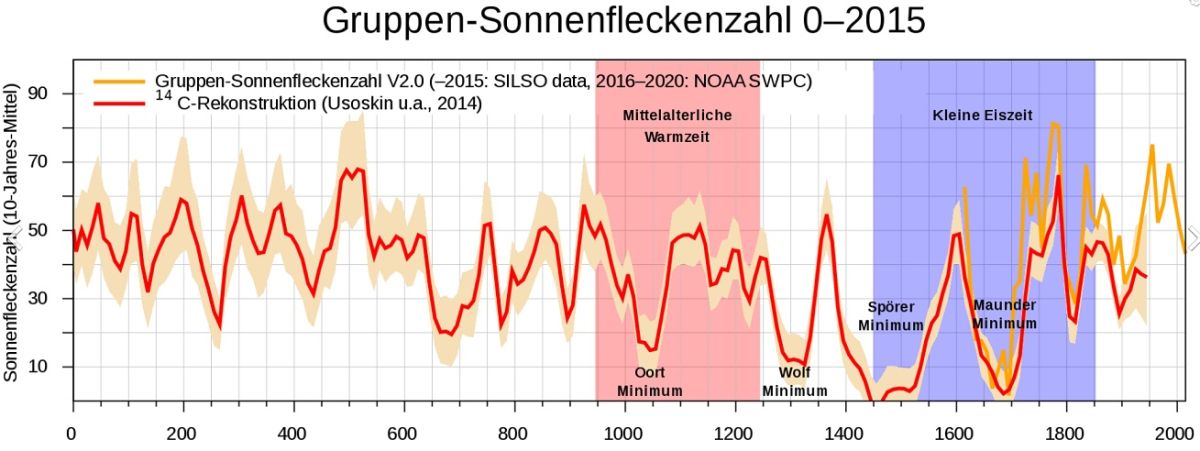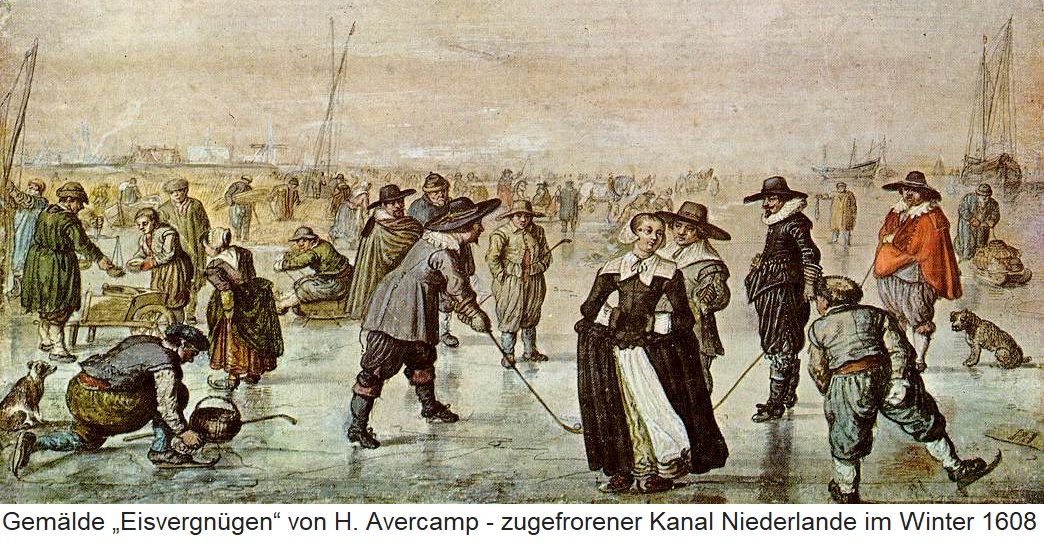Term for a relatively long-lasting climatic phenomenon from 1450 to 1850 that occurred worldwide with regional and temporal focal points in Europe, North America, Russia and China. Prior to this, there had been a pronounced temperature high between 900 and 1350, mainly in Europe, which was referred to as the Medieval Warm Period. At that time, the wine-growing frontier was much further north along the southern Baltic coast. From 1450 onwards, the climate began to deteriorate again. Particularly cold periods stretched from 1570 to 1630 and from 1675 to 1715, accompanied by a worldwide expansion of the glaciers. The greatest expansion of the ice occurred around 1700, after which the glaciers slowly retreated again. This retreat is still continuing and many glaciers in the Alps have already melted completely.

Effects
There were repeated extremely cold, frosty winters and rainy summers with heavy rainfall. Average temperatures were one to one and a half degrees Celsius below today's levels. This resulted in poor harvests in agriculture and the resulting famines threatened the population. This led to several waves of emigration, especially to North America. In the 15th century, the Baltic Sea froze over completely at least twice. In the winter of 1780, it was possible to cross the harbour of New York on the ice. On the Great Lakes in North America, the ice sometimes remained until June.

Year without a summer 1816
The year 1816 was particularly extreme in the north-east of America and in western and southern Europe. It went down in history as the "year without a summer" and was therefore popularly known in Germany as the "Eighteen Hundred and Frozen". Viticulture in Europe was also severely affected by the climate change and there were many bad harvests with poor and overly acid ic vintages, which were, however, repeatedly interrupted by good and outstanding years with even some wines of the century. One particularly sour vintage became known in Vienna as the Reifbeißer.
Causes
Increased volcanism, reduced solar activity (the appearance of sunspots) and the reforestation of agricultural land following a decline in population due to disease have been suggested as causes of the Little Ice Age. Changes in ocean currents caused by the cooling are thought to have played a reinforcing role. See also Climate, climate change, greenhouse effect and weather.
Graphic: by DeWikiMan - Own work, CC BY-SA 4.0, Link
Painting: By Hendrick Avercamp - Teylers Museum, Public domain, Link
Source: WIKIPEDIA - Little Ice Age
Voices of our members

The wein.plus encyclopaedia is a comprehensive, well-researched reference work. Available anytime and anywhere, it has become an indispensable part of teaching, used by students and myself alike. Highly recommended!
Dominik Trick
Technischer Lehrer, staatl. geprüfter Sommelier, Hotelfachschule Heidelberg